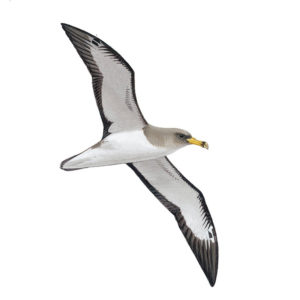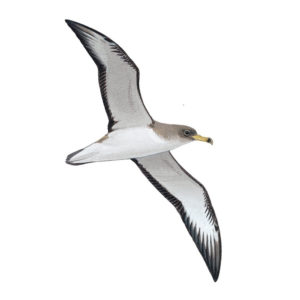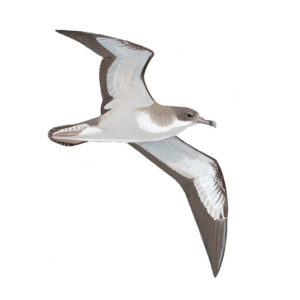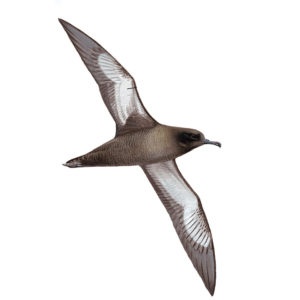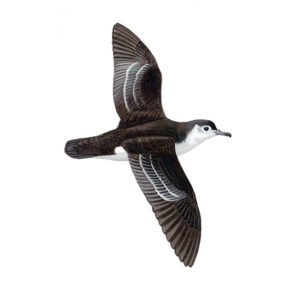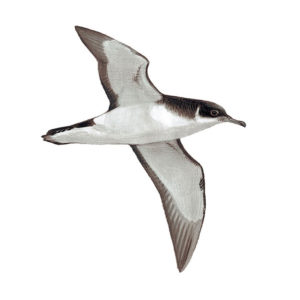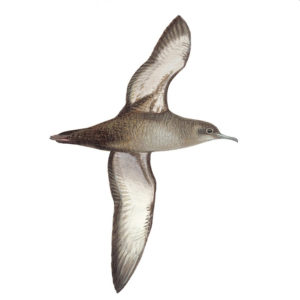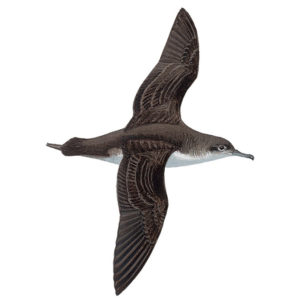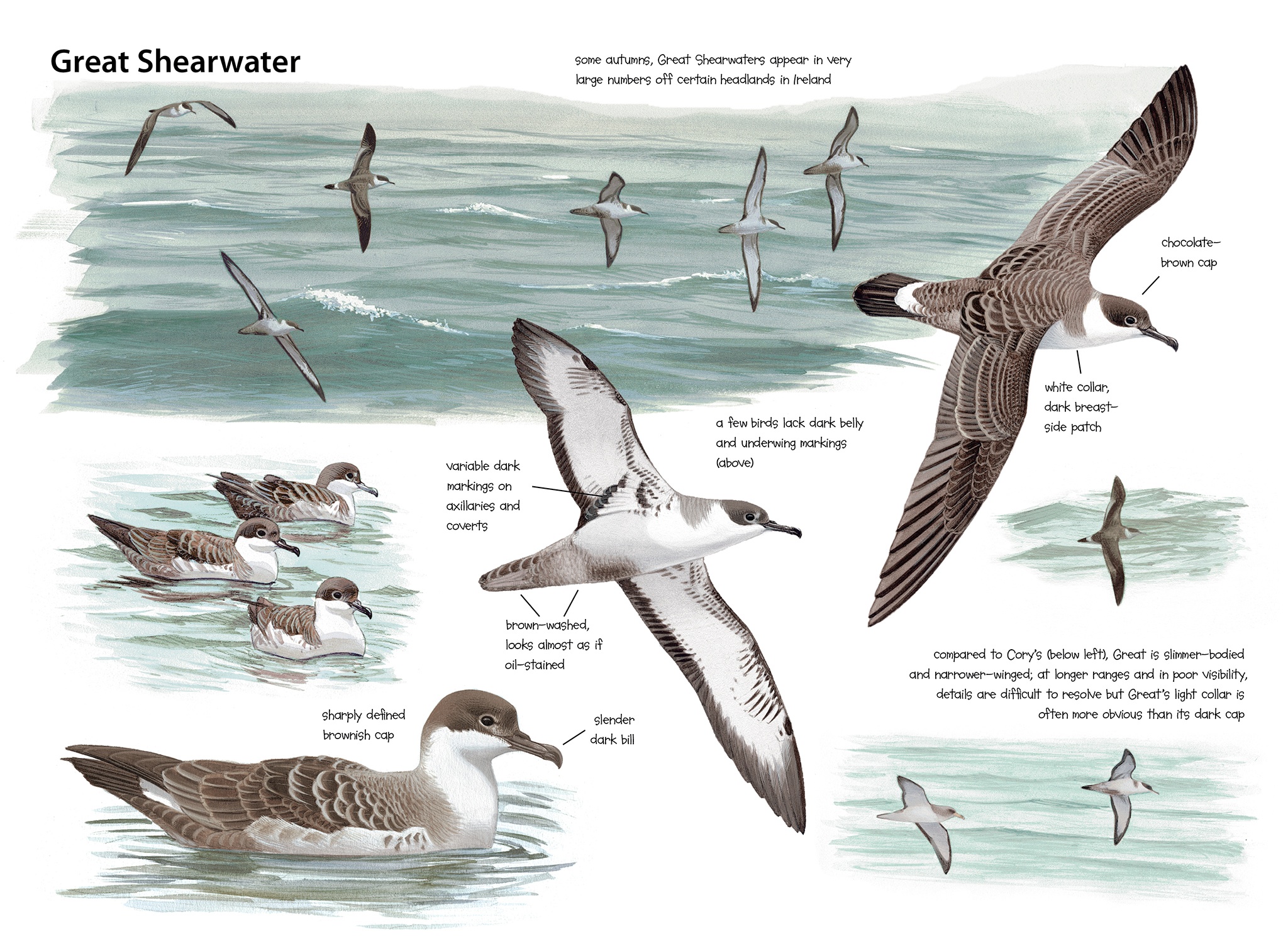
Killian Mullarney
Text by Magnus Robb.
There are two species whose voices can be heard only at sea in the North Atlantic, because their breeding colonies are south of the equator. “Raucous calls and screams” of Sooty Shearwaters P griseus at sea have been noted by Palmer (1962). But perhaps the most vocal of all shearwaters at sea is Great Shearwater P gravis, which breeds mainly in the Tristan da Cunha archipelago in the South Atlantic. At one time, this was the only shearwater in the European field guides that I had never seen. Finally, in August 2006, I saw over 30 while seawatching from Skellig Michael, Kerry. A couple of days later, Mark forwarded me a text message from Anthony McGeehan, who had seen a whole raft of them off Donegal, Ireland, and even heard them calling! The recording in CD1-34 was captured using a video camera by Stuart McKee, who was with Anthony that day.
CD1-34: Great Shearwater Puffinus gravis near Tory Island, Donegal, Ireland, 27 August 2006. Calls coming from a raft of about 100 Great and two Sooty Shearwaters P griseus, recorded on a rough day by Stuart McKee.
Anthony later described the behaviour of these Great Shearwaters for me:
“The birds’ body language was curious. Rather than growing uneasy as we wallowed towards them, they looked content. Each faced into the wind, head down. Their demeanour suggested a group of roosting shorebirds. Surely they must fly, if we get any closer they will have to swim to get out of the way? Actually, some did rise off the water, only to resettle on the far flank of the flock. Their group organisation was intense and reinforced by an outburst of calling. Picture and now sound. The rocking of the boat did not feel so bad any more. The birds and us seemed to share a kind of unison. At times, we rose and fell in harmony. Never having read a word about Great Shearwater vocalisations, I had no idea what to expect. What we heard was not so much individual calls, it was a chorus. Northern Fulmar is comparable in size to Great Shearwater and its gruff and guttural tones might have served as a basis for analogy. Wrong. Compared to Northern Fulmar, these birds were Nightingales. ‘Like Kittiwakes on helium’ was a pretty good handle. High and mewing: a cartoonish, baby voice that did not fit the bird yet was completely endearing.
Independent of anything that we did, the calling stopped. Like a glider squadron lining up for a phased take off, small parties taxied into flight but wheeled around the core of the flock until those birds too became airborne. There was no rush, no panic. A muted ballet culminated in a great circling spiral of shearwaters. Only then did they go. We knew that was it. The performance was over. It was still early on a Sunday morning and it felt like a church service had just been enacted. Maybe something from the Book of Revelations. A lesson confirming humankind’s place in evolution: above rodents, below seabirds.”

Great Shearwaters Puffinus gravis, Tory Island, Donegal, Ireland, 27 August 2006 (Anthony McGeehan). The same birds as in CD1-34.

